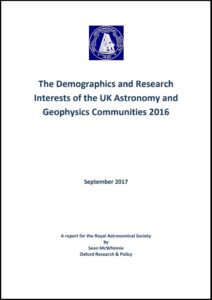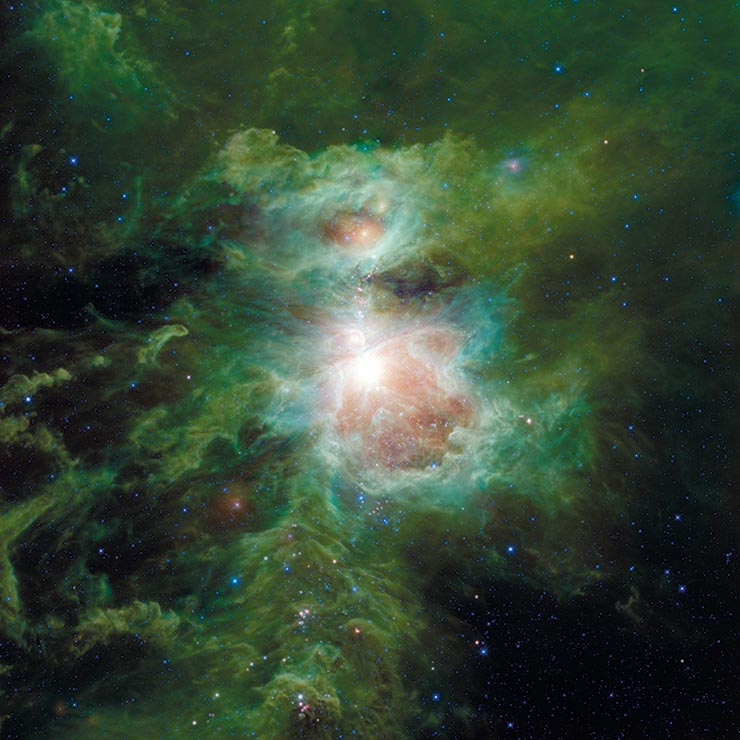The Demographics and Research Interests of the UK Astronomy and Geophysics Communities 2016
The 2016 study followed the same methodology as that carried out in 2010. Questionnaires were distributed to university departments and research establishments to collect data about the staff and research students engaged in astronomy, solar system science, and solid earth geophysics research. 40 university departments/research groups and two research establishments returned the questionnaire. Data for a further 47 university departments and six other research establishment were taken from their websites.
A second questionnaire, designed to collect detailed information about how individuals spend their time and what their research interests are, as well as demographic information, was made available to departments and research establishments as a link to the survey website.
The total sizes of the respective communities (staff and students) were 2,437 in astronomy, 429 in solar system science, and 2,050.5 in solid earth geophysics. The equivalent of 381 members of the community have cross disciplinary interests. The sizes of all the communities had increased since 2010 but specifically the measured size of the solid earth geophysics community has increased significantly from 357.2 to 2050.5. This increase most likely reflected a more thorough assessment of the size of the community, in particular the geophysicists working in research establishments, rather than a real increase.
Among permanent staff 73% were British, 19% were from other European Union countries, 3% were from the USA, and 7% were from other countries. 88% of permanent staff specified their ethnicity as White. Considering only British respondents, 95% were White. Results from the 2011 census showed that 87.1% of the UK population were white.
All grades of academic staff spent between 33% and 38% of their time on research activities. Lecturers, senior lecturers and readers spent more time on undergraduate teaching (between 26% and 34%) than professors (20%), and all staff spent around 10% on postgraduate teaching. The proportion of time spent on administration and on external professional activities increases with seniority. Staff spend about 5% of their time on public engagement and outreach. There had been relatively little change in the distribution of effort between 2010 and 2016. Outside universities, research staff report spending 60% of their time on research.
48% of temporary/fixed-term postdoctoral research associates were British, and, of these, 97% of those who indicated their ethnicity were White. 33% of the sample were of other European Union nationalities and, like the British sample, 91% of those who indicated their ethnicity were White. Only 10% of the sample indicated that they held citizenship from outside the European Union or the United States.
As in 2010, on average postdoctoral research associates spent 82% of their time on research activities which is more than double the proportion of time spent by permanent academic staff.
Of the 246 postgraduate research students working in areas related to astronomy who specified their sex, 65% were male, 33% are female and 2% did not indicate their sex as other. These results are very like those recorded in 2010, when 65% were male and 34% female. Of the 33 respondents who indicated interests in geophysics, 22 (61%) were male and 14 (39%) were female. 69% of postgraduate research student respondents were British, 16% were from elsewhere in the European Union, and 2% were from the USA.
Combining the data for permanent staff and postdoctoral research associates allowed the assessment of the proportion of total effort expended on each general research activity. 32% of effort was expended on Theory and numerical modelling and 34% on Data analysis, 10% on Observation/Data Collection, 12% on Data reduction, and 8% on Instrumentation, 1% on Facility operation and maintenance and 4% on Other Activities. Activities are split 59%, 30% and 12% between Ground-based, Space and Other areas respectively. The pattern of activity is very much like that found in 2010.




